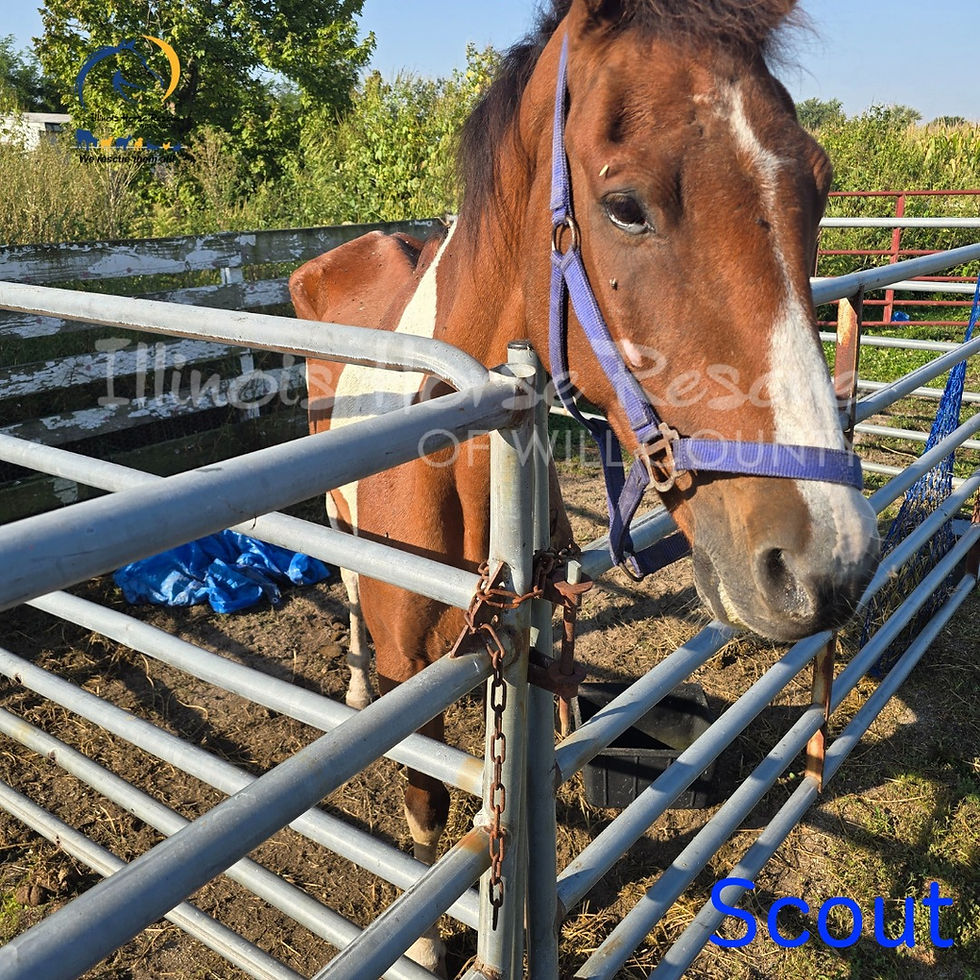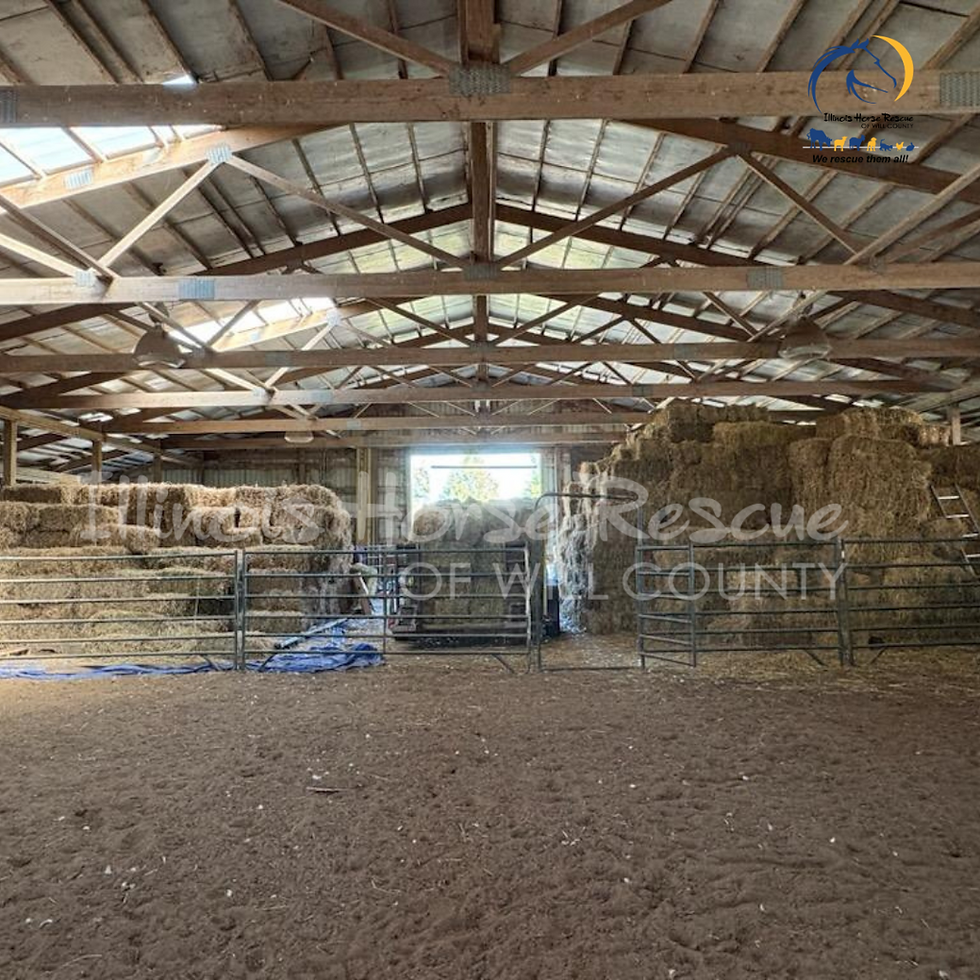Horse Lifespan and Feral Cats
- Illinois Horse Rescue

- Mar 1
- 3 min read
Welcome, dear readers, to this month’s Straight from the Rescues’ Mouths blog! I’m Pusheen, one of the wise and wonderful barn cats here at Illinois Horse Rescue of Will County. I keep a close eye on everything happening around here, and this month, I have two important topics to discuss—one about our big, hoofed friends and the other about, well… us cats!
How Long Do Horses Live?
This is a question I hear all the time on tours. Humans always ask, “How long do horses live?” Well, just a few years ago, the average lifespan was 20–25 years, but now it has increased to 25–30 years. The key word here is AVERAGE—some horses live shorter lives, while others live MUCH longer!
Sadly, this month, we said goodbye to one of our oldest and dearest horse pals. Danny Boy passed away just three months shy of his 40th birthday! Can you believe it? He was a legend around here and is deeply missed by all of us.
Horses are a huge commitment. If people struggle to commit to a dog that lives 10–13 years, imagine caring for the same horse for 30 or more! From what I hear, a typical horse goes through 5 to 10 homes in their lifetime. That’s a lot of change for such a big-hearted creature, don’t you think?

The Truth About Feral Cats
Now, onto a topic that hits a little closer to home—feral cats. My human pals have been getting a flood of phone calls and emails lately from kind-hearted people worried about cats living outside. They see a cute kitty and think, “Oh no, that poor thing!” But here’s the thing—feral cats are not the same as lost house cats. They are wild, just like raccoons or possums, and have the same natural lifespan of about 1 to 3 years.

That doesn’t mean every outdoor cat is feral and can’t become a house pet. People tame wild animals all the time! But with shelters overflowing and very few volunteers willing to put in the time to socialize a feral cat, it’s not as simple as just bringing them inside. Plus, think about the cat’s perspective—what kind of life is it to be terrified in a cage, waiting to become friendly? Some cats may adjust, but others are happier and healthier living free.
That said, some feral cats do live much longer, especially when cared for by kind humans. My oldest barn cat buddy is 13 years old, and I myself am a proud 7 years old! Here at IHRWC, we take care of our barn cats, providing food, vet care, and medical attention when needed. We strongly support TNR (Trap-Neuter-Release, NOT relocation) to help control the feral cat population while allowing them to live their best outdoor lives.
It’s estimated that there are over 60 million stray and feral cats in the U.S. alone. We understand that it’s heartbreaking to return a cat to an area that doesn’t seem safe, but relocating them isn’t always the answer—it can sometimes be a death sentence if they are moved to unfamiliar territory. That’s why IHRWC works with five shelters to place feral cats in barn homes where they have food, shelter, and a purpose. But we do not take in privately trapped cats for relocation.
So, if you see a feral cat, remember—we are not lost, just living life our own way! And if you really want to help, support your local TNR programs.
That’s all for this month! Stay warm, stay curious, and maybe leave an extra treat out for your local barn cat—we won’t say no!
Paws and whiskers,
Pusheen 🐾



.png)



Comments